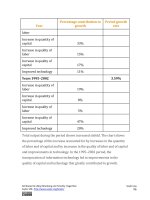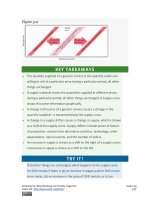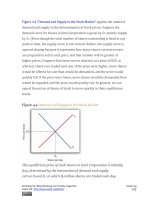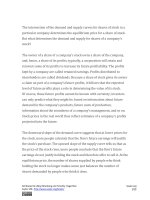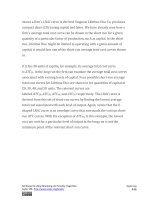Authors libby rittenberg 490
Bạn đang xem bản rút gọn của tài liệu. Xem và tải ngay bản đầy đủ của tài liệu tại đây (383.5 KB, 1 trang )
its variable costs. We can even think of a firm’s decision to close at the end
of the day as a kind of shutdown point; the firm makes this choice because
it does not anticipate that it will be able to cover its variable cost
overnight. It expects to cover those costs the next morning when it
reopens its doors.
Marginal Cost and Supply
In the model of perfect competition, we assume that a firm determines its
output by finding the point where the marginal revenue and marginal cost
curves intersect. Provided that price exceeds average variable cost, the
firm produces the quantity determined by the intersection of the two
curves.
A supply curve tells us the quantity that will be produced at each price, and
that is what the firm’s marginal cost curve tells us. The firm’s supply curve
in the short run is its marginal cost curve for prices above the average
variable cost. At prices below average variable cost, the firm’s output
drops to zero.
Panel (a) of Figure 9.10 "Marginal Cost and Supply" shows the average
variable cost and marginal cost curves for a hypothetical astrologer,
Madame LaFarge, who is in the business of providing astrological
consultations over the telephone. We shall assume that this industry is
perfectly competitive. At any price below $10 per call, Madame LaFarge
would shut down. If the price is $10 or greater, however, she produces an
output at which price equals marginal cost. The marginal cost curve is thus
her supply curve at all prices greater than $10.
Attributed to Libby Rittenberg and Timothy Tregarthen
Saylor URL: />
Saylor.org
490
